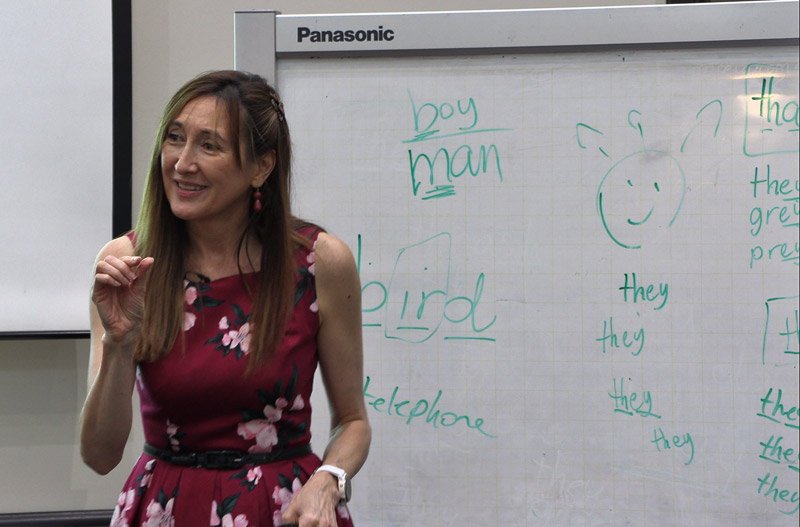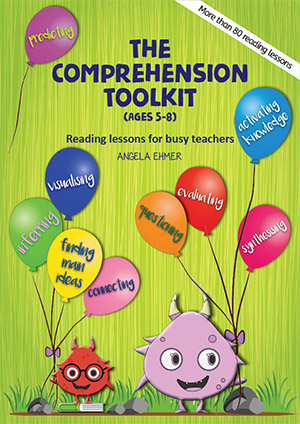Friendship Box Writing Stimulus
What is a Friendship Box
The Friendship Box is a box containing a name card for each student. Students are assigned short writing tasks which prompt them to write for a variety of purposes. By drawing a name from the box students have an audience for the task. Note: Students enjoy decorating the name cards so that they are reflective of their personalities. A profile of interests and hobbies can be recorded on the back of each card. This provides the writer with some information about his/her audience.
Steps:
- Students select a name from the box.
- Writing task is assigned.
- Students review the task and may, if required, prepare up to five questions to ask the buddy. Questions should assist the writer with the writing task. Open questions are more informing than closed questions. For example, Do you like camping? is a closed question. “What type of outdoor activities do you like?” is an open question. Students may need teaching and/or coaching to improve questioning skills.
- Students complete the task.
- Tasks are shared.
- Students reflect about aspects of the writing process or any of the following:
- Audience appeal; appropriateness of content (Does it appeal to the student it is aimed at? Why? Why not?)
- Topic/content knowledge (Did the writer gather relevant and useful information in preparation? How could the writer improve?)
- Quality: Clarity/Vocabulary Choices/Sentence Construction and Grammar/Sentence Fluency and Cohesion/Organisation/Strategic Hooks/Presentation/Design.
A dozen quick writing ideas:
- Draw a name from the box. Write a letter to this person and tell them something interesting about yourself that you don’t think they know.
- Draw a name from the box. Make a list of this person’s good qualities. Try to give an example for each.
- Draw a name from the box. Write ten things you could do at lunchtime. Give the list to your partner and have him/her try to put your list in order from your most to least favourite.
- Draw a name from the box. Write a note to this person and tell him/her five things you like about them.
- Draw a name from the box. Write a set of instructions to tell this person how to get from school to your house. Have this person rate the clarity of your instructions. Use the following ratings:
- 3 = I’m safely there!
- 2 = I think I could work it out.
- 1 = I’m completely lost!
- Draw a name from the box. Think about the types of things this person might like to do. Using one of your ideas, design an appealing invitation to invite them to do it.
- Draw a name from the box. Think of a product that you think would appeal to this person. On a piece of paper design a poster for this product. Remember your audience – your poster should appeal to your partner.
- Draw a name from the box. Do something that makes this person smile today. Make a list of ideas you will try. As you try each idea, tick off the ones that work. Score your list at the end of the day and give your list to your friend. You are aiming for ten smiles!
- Draw a name from the box. Investigate what this person likes to eat. Create a healthful morning tea and lunch menu that you think they’d enjoy.
- Draw a name from the box. Investigate what this person likes to read. Make a list of books, stories or magazines you think they’d enjoy. Beside each title, write one or two sentences to explain why you think you partner would enjoy it. Have your partner rate your list. Use the following ratings:
- 3 = Wicked!
- 2 = Not bad
- 1 = Thanks, but no thanks!
- Draw a name from the box. Make up three riddles or jokes to share with your partner. Have them rate your comedic skills. Use the following ratings:
- 3 = You’re a natural!
- 2 = Pretty good
- 1 = Don’t quit your day job!
- Draw a name from the box. Teach this person how to do something. Use your knowledge of how to write a procedure or set of instructions. Add pictures/diagrams/etc. to support understandings if needed.





Thanks for forwarding this idea to me. It sounds great and I will possibly include it in my planning for Term 4.
It would make a great activity for early finishers as well as a whole class activity.
Love the sound of this. It will really help an autistic child in my class who doesn’t consider life from any one else’s perspective. Will try it next term.
This sounds a great idea for child in my support area. A good way for them to practise & demonstrate understanding of explicit teaching.
As my grade 3’s are particularly reluctant to put pen to paper even with potential rewards to come this idea of a friendship box sounds great. I’m all for trying new ideas that will encourage any form of writing. thanks heaps for the idea. We will give this a go next term and I’ll pass this onto the other grade 3 teachers.
Thanks for the Friendship Box idea. After sharing it with other teachers the feedback was “Just what I needed for…” Thank you Angela.
What a great idea the ‘Friendship Box’ is! Thank you very much for it, Angela, as I teach in a multi-age 4-7 class (small school) and am always on the look-out for ideas to suit this type of setting.
This sounds like a great idea. I can use the instructions idea for a mapping activity for maths. The students can devise a route for a buddy to find a ‘surprise’ somewhere in the school ground. It will also be useful for the fast finishers.
Thankyou for the “Friendship Box” idea. I am always looking for ideas to maintain the enthusiasm in my Year 3 writers. I think the children will love it next term!